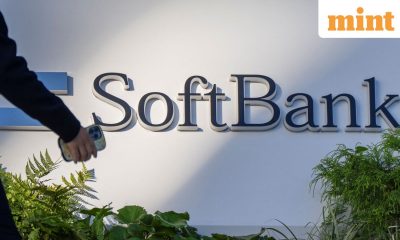

Metaverse
Your employer is (probably) unprepared for artificial intelligence – Crypto News
Speculation about the consequences of AI—for jobs, productivity and quality of life—is at fever pitch. The tech is awe-inspiring. And yet AI’s economic impact will be muted unless millions of firms beyond Silicon Valley adopt it. That would mean far more than using the odd chatbot. Instead, it would involve the full-scale reorganization of businesses and their in-house data. “The diffusion of technological improvements”, argues Nancy Stokey of the University of Chicago, “is arguably as critical as innovation for long-run growth.”
The importance of diffusion is illustrated by Japan and France. Japan is unusually innovative, producing on a per-person basis more patents a year than any country bar South Korea. Japanese researchers can take credit for the invention of the QR code, the lithium-ion battery and 3D printing. But the country does a poor job of spreading new tech across its economy. Tokyo is far more productive than the rest of the country. Cash still dominates. In the late 2010s only 47% of large firms used computers to manage supply chains, compared with 95% in New Zealand. According to our analysis, Japan is roughly 40% poorer than would be expected based on its innovation.
View Full Image
France is the opposite. Although its record on innovation is average, it is excellent at spreading knowledge across the economy. In the 18th century French spies stole engineering secrets from Britain’s navy. In the early 20th century Louis Renault visited Henry Ford in America, learning the secrets of the car industry. More recently, former AI experts at Meta and Google founded Mistral AI in Paris. France also tends to do a good job of spreading new tech from the capital to its periphery. Today the productivity gap in France between a top and a middling firm is less than half as big as in Britain.
During the 19th and 20th centuries businesses around the world became more “French,” with new technologies diffusing ever faster. Diego Comin and Martí Mestieri, two economists, find evidence that “cross-country differences in adoption lags have narrowed over the last 200 years .” Electricity swept across the economy faster than tractors. It took just a couple of decades for personal computing in the office to cross the 50% adoption threshold. The internet spread even faster. Overall, the diffusion of technology helped propel productivity growth during the 20th century.
Since the mid-2000s, however, the world has been turning Japanese. True, consumers adopt technology faster than ever. According to one estimate TikTok, a social-media app, went from zero to 100m users in a year. ChatGPT itself was the fastest-growing web app in history until Threads, a rival to Twitter, launched this month. But businesses are increasingly cautious. In the past two decades all sorts of mind-blowing innovations have come to market. Even so, according to the latest official estimates, in 2020 just 1.6% of American firms employed machine learning. In America’s manufacturing sector only 6.7% of companies make use of 3D printing. Only 25% of business workflows are on the cloud, a number that hasn’t budged in half a decade.
Horror stories abound. In 2017 a third of Japanese regional banks still used COBOL, a programming language invented a decade before man landed on the moon. Last year Britain imported more than £20m-($24m-) worth of floppy disks, MiniDiscs and cassettes. A fifth of rich-world firms do not even have a website. Governments are often the worst offenders—insisting, for instance, on paper forms. We estimate that bureaucracies across the world spend $6bn a year on paper and printing, about as much in real terms as in the mid-1990s.
Best and the rest
The result is a two-tier economy. Firms that embrace tech are pulling away from the competition. In 2010 the average worker at Britain’s most productive firms produced goods and services worth £98,000 (in today’s money), which had risen to £108,500 by 2019. Those at the worst firms saw no rise. In Canada in the 1990s frontier firms’ productivity growth was about 40% higher than non-frontier firms. From 2000 to 2015 it was thrice as high. A book by Tim Koller of McKinsey, a consultancy, and colleagues finds that, after ranking firms according to their return on invested capital, the 75th percentile had a return 20 percentage points higher than the median in 2017—double the gap in 2000. companies see huge gains from buying new tech; many see none at all.

View Full Image
Although the economics may sound abstract, the real-world consequences are crushingly familiar. People stuck using old technologies suffer, along with their salaries. In Britain, average wages at the least productive 10% of firms have fallen slightly since the 1990s—even as average wages at the best firms have risen strongly. According to Jan De Loecker of KU Leuven and colleagues, “the majority of inequality growth across workers is due to increasing average wage differences between firms”. What, then, has gone wrong?
Three possibilities explain lower diffusion: the nature of new technology, sluggish competition, and increasing regulation. Robert Gordon of Northwestern University has argued that the “great inventions” of the 19th and 20th centuries had a far bigger impact on productivity than more recent ones. The problem is that as technological progress becomes more incremental, diffusion also slows, since companies have less incentive and face less competitive pressure to upgrade. Electricity provided light and energy to power machines. Cloud computing, by contrast, is needed only for the most intensive operations. Newer innovations, like machine-learning, may be trickier to use, requiring more skilled workers and better management.

View Full Image
Business dynamism fell across the rich world in the first decades of the 21st century. Population aged. Fewer new firms were set up. Workers moved companies less frequently. All this reduced diffusion, since workers spread tech and business practices as they move across the economy.
In industries run or heavily managed by the government, technological change happens slowly. As Jeffrey Ding of George Washington University notes, in the centrally planned Soviet Union innovation was world-beating—think of Sputnik—but diffusion was non-existent. The absence of competitive pressure blunted incentives to improve. Politicians often have public-policy goals, such as maximizing employment, that are inconsistent with efficiency. Heavily regulated industries make up a large chunk of Western economies today: such sectors, including construction, education, health care and utilities, account for a quarter of American GDP.
Could AI break the mould, diffusing across the economy faster than other recent technologies? Maybe. For almost any firm it is easy to dream up a use-case. No more administration! A tool to file my taxes! Covid-19 may also have injected a dose of dynamism into Western economies. New firms are being set up at the fastest pace in a decade, and workers are swapping jobs more often. Tyler Cowen of George Mason University adds that weaker firms may have a particular incentive to adopt AI, because they have more to gain.
AI can also be built into existing tools. Many coders—maybe most—already use AI on a daily basis owing to its integration into everyday coding instruments through Github’s CoPilot. Word processors, including Microsoft Word and Google Docs, will soon roll out dozens of AI features.
not a dinner party
On the other hand, the biggest benefits from new forms of AI will come when firms entirely reorganize themselves around the new technology; by adapting AI models for in-house data, for example. That will take time, money and, crucially, a competitive drive. Gathering data is tiresome and running the best models fearfully expensive—a single complex query on the latest version of ChatGPT can cost $1-2. Run 20 in an hour and you have passed the median hourly American wage.
These costs will fall, but it could take years for the technology to become sufficiently cheap for mass deployment. Bosses, worried about privacy and security, regularly tell The Economist that they are unwilling to send their data to modify models that live elsewhere. Surveys of small businesses are not encouraging. One, by GoDaddy, a web-hosting company, suggests that around 40% of those in America are uninterested in AI tools. The technology is undoubtedly revolutionary. But are businesses ready for a revolution?
© 2023, The Economist Newspaper Limited. All rights reserved. From The Economist, published under license. The original content can be found on www.economist.com
-

 Cryptocurrency1 week ago
Cryptocurrency1 week agoIlluminating progress: Is a $140K income ‘poor’? – Crypto News
-
Technology6 days ago
Crypto Lawyer Bill Morgan Praises Ripple’s Multi-Chain Strategy as RLUSD Hits $1.1B – Crypto News
-

 Blockchain5 days ago
Blockchain5 days agoAnalyst Reveals What You Should Look Out For – Crypto News
-

 Technology1 week ago
Technology1 week agoSamsung Galaxy S25 Ultra 5G for under ₹80,000 on Flipkart? Here’s how the deal works – Crypto News
-

 others7 days ago
others7 days agoGold holds strong at $4,200 as Fed-cut anticipation builds – Crypto News
-
Cryptocurrency1 week ago
Crypto Platform Polymarket Relaunches in U.S. Following CFTC Approval – Crypto News
-

 Cryptocurrency1 week ago
Cryptocurrency1 week agoUK recognises crypto as property in major digital asset shift – Crypto News
-
others1 week ago
Bitcoin Price Forecast as BlackRock Sends $125M in BTC to Coinbase — Is a Crash Inevitable? – Crypto News
-

 Cryptocurrency7 days ago
Cryptocurrency7 days agoCrypto Holiday Gift Guide 2025 – Crypto News
-
others5 days ago
Breaking: Labor Department Cancels October PPI Inflation Report Ahead of FOMC Meeting – Crypto News
-

 Cryptocurrency5 days ago
Cryptocurrency5 days agoArgentina moves to reshape crypto rules as banks prepare for Bitcoin services – Crypto News
-
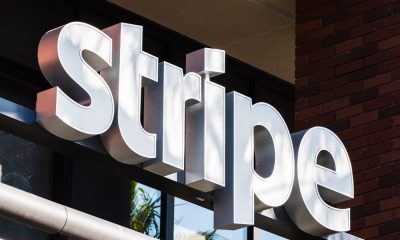
 Blockchain4 days ago
Blockchain4 days agoStripe and Paradigm Open Tempo Blockchain Project to Public – Crypto News
-
Business1 week ago
Crypto Platform Polymarket Relaunches in U.S. Following CFTC Approval – Crypto News
-

 Technology1 week ago
Technology1 week agoWorking on a screen all day? These 8 LED monitors in Dec 2025 are kinder on your eyes – Crypto News
-
others1 week ago
Morgan Stanley Turns Bullish, Says Fed Will Cut Rates by 25bps This Month – Crypto News
-

 Cryptocurrency7 days ago
Cryptocurrency7 days agoFlorida Appeals Court Revives $80M Bitcoin Theft – Crypto News
-

 Cryptocurrency1 week ago
Cryptocurrency1 week agoBTC staking platform Babylon teams up with Aave for Bitcoin-backed DeFi insurance – Crypto News
-

 Blockchain1 week ago
Blockchain1 week agoSolana (SOL) Cools Off After Rally While Market Eyes a Resistance Break – Crypto News
-
others1 week ago
XRP Price Prediction As Spot ETF Inflows Near $1 Billion: What’s Next? – Crypto News
-

 others1 week ago
others1 week agoThe rally to 7120 continues – Crypto News
-

 Blockchain7 days ago
Blockchain7 days agoBitcoin Buries The Tulip Myth After 17 Years: Balchunas – Crypto News
-

 Cryptocurrency6 days ago
Cryptocurrency6 days agoWhy Ethereum strengthens despite whale selling – Inside Asia premium twist – Crypto News
-

 others6 days ago
others6 days agoNasdaq futures hold key structure as price compresses toward major resistance zones – Crypto News
-

 others6 days ago
others6 days agoNasdaq futures hold key structure as price compresses toward major resistance zones – Crypto News
-

 Blockchain4 days ago
Blockchain4 days agoBMW Helps JPMorgan Drive Blockchain-Based FX Payments – Crypto News
-
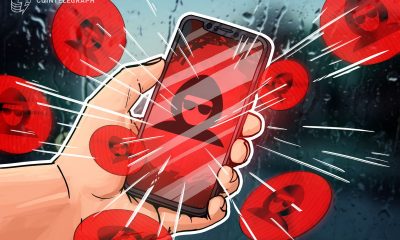
 Blockchain1 week ago
Blockchain1 week agoLedger Finds Chip Flaw Allowing Complete Phone Takeover – Crypto News
-
Business1 week ago
Kalshi, Robinhood and Crypto com Face Cease & Desist Order in Connecticut – Crypto News
-
Business1 week ago
What’s Next for Dogecoin Price After Whales Scoop 480M DOGE? – Crypto News
-

 Cryptocurrency1 week ago
Cryptocurrency1 week agoCoinDCX data reveals India’s rising appetite for diversified digital assets – Crypto News
-

 Technology1 week ago
Technology1 week agoCloudflare Resolved Services Issues Caused by Software Update – Crypto News
-
others1 week ago
Colombia Consumer Price Index (YoY) below forecasts (5.45%) in November: Actual (5.3%) – Crypto News
-
Technology1 week ago
Solana Price Outlook: Reversal at Key Support Could Lead to $150 Target – Crypto News
-
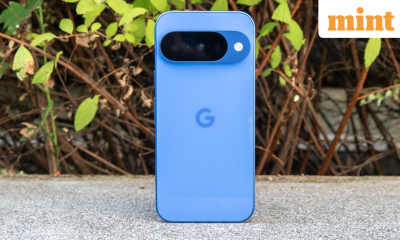
 Technology1 week ago
Technology1 week agoFrom security camera to gaming hub: 6 Easy tricks to make your old smartphone genuinely useful again – Crypto News
-

 others1 week ago
others1 week agoCanadian Dollar soars after upbeat labor report – Crypto News
-
others1 week ago
$1.3T BPCE To Roll Out Bitcoin, Ethereum and Solana Trading For Clients – Crypto News
-

 others6 days ago
others6 days agoStocks survive PCE and consumer data – FOMC too? – Crypto News
-

 Cryptocurrency6 days ago
Cryptocurrency6 days agoThursday links: Prediction markets, agent hackers, quantum risks – Crypto News
-

 Technology6 days ago
Technology6 days agoStarlink India pricing revealed: How much does monthly plan cost and what are its benefits? – Crypto News
-
Technology1 week ago
Dogecoin Price Holds $0.15: Bullish Reversal or Just a Temporary Bounce? – Crypto News
-

 Cryptocurrency1 week ago
Cryptocurrency1 week agoCayman Islands sees rising Web3 foundation activity – Crypto News
-

 Technology1 week ago
Technology1 week agoApple Watch’s latest update drops a lifesaving feature for Indian users: here’s how it works – Crypto News
-

 Metaverse1 week ago
Metaverse1 week agoBetter Tomorrow: How OpenAI is reimagining education and inclusion for the digital age – Crypto News
-
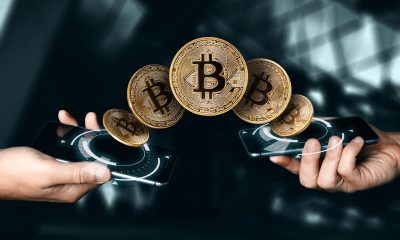
 Blockchain1 week ago
Blockchain1 week agoN3XT Launches Blockchain-Powered Bank | PYMNTS.com – Crypto News
-
Business1 week ago
Bitcoin, ETH, XRP, SOL’s Max Pain Price as Over $4B Options to Expire – Crypto News
-
Business1 week ago
Is ZCash Price Set for a Bigger Rally After Its 10% Surge on the Bitget Listing? – Crypto News
-

 Cryptocurrency1 week ago
Cryptocurrency1 week agoGlassnode report reveals Bitcoin’s growing stability amid ETF activity and RWA expansion – Crypto News
-
Technology1 week ago
Peter Brandt Hints at Further Downside for Bitcoin After Brief Rebound – Crypto News
-
others1 week ago
United States Consumer Credit Change came in at $9.18B, below expectations ($10.5B) in October – Crypto News
-
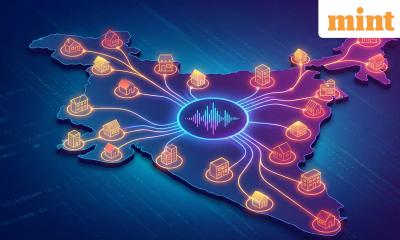
 Technology6 days ago
Technology6 days agoTier 2 and Tier 3 cities drive over 90% of engagement on audio social platforms in India, says report – Crypto News
-
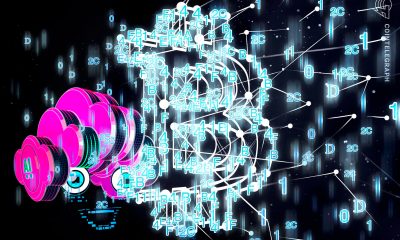
 Blockchain6 days ago
Blockchain6 days agoBittensor Set for First TAO Halving on Dec. 14 – Crypto News





